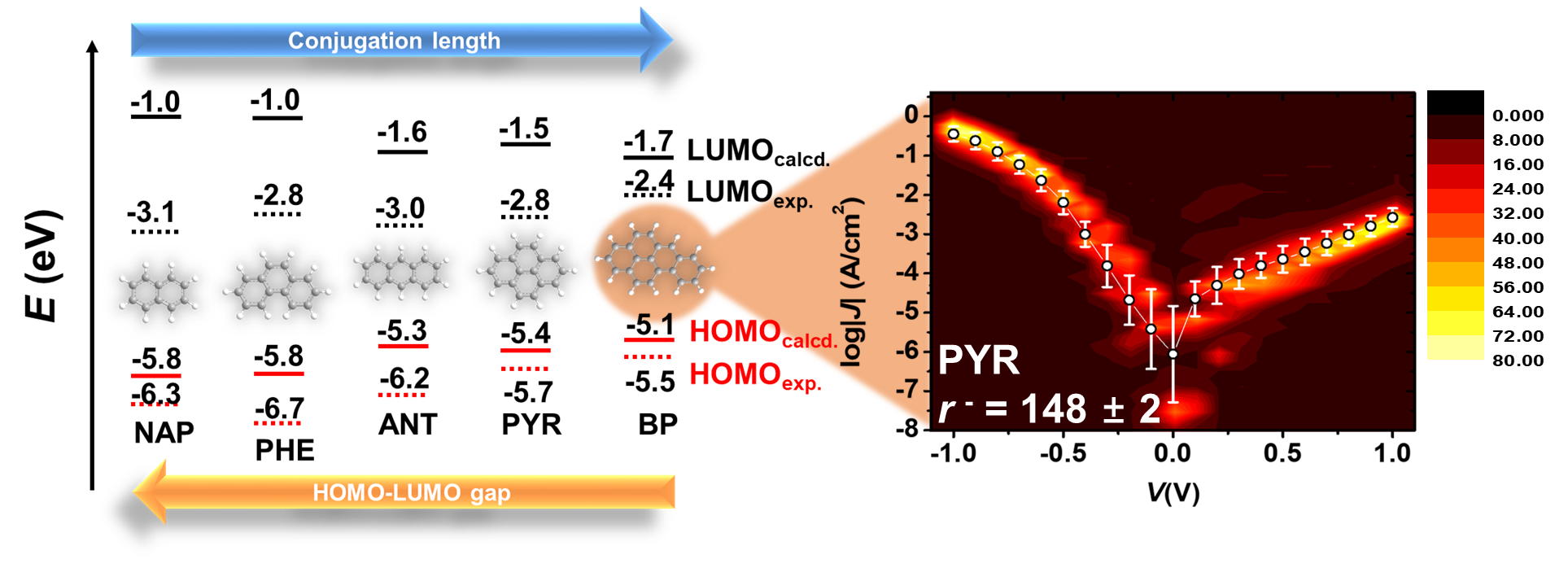

Soo Jin Cho(제1저자, 석박통합과정) Gyu Don Kong(공동 제1저자, 박사과정)
Variation of electronic structure of individual molecules as a function of applied bias matters for performance of molecular and organic electronic devices. Understanding the structure-electric field relationship, however, remains a challenge because of lack of in-operando spectroscopic technique and complexity arising from ill-defined on-surface structure of molecules and organic-electrode interfaces within devices. Here, we report reliable and reproducible molecular diode can be achieved by control of conjugation length in polycyclic aromatic hydrocarbon-terminated n-alkanethiolate (denoted as SC PAH), incorporated into liquid metal-based large-area tunnel junctions in the form of self-assembled monolayer. By taking advantage of structural simplicity and tunability of SC11PAH and high-yielding feature of the junction technique, we demonstrate the increase in conjugation length of the PAH terminal group leads to significant rectification ratio up to ~1.7 × 102 at ±740 mV. Further study suggests that the Stark shift of molecular energy resonance of PAH breaks the symmetry of energy topography across the junction and induces rectification in a temperature-independent charge transport regime.

 Chemiluminescent Probe for the In Vitro and In Vivo Imaging o...
Chemiluminescent Probe for the In Vitro and In Vivo Imaging o...
 A New Approach for Large-Area Thermoelectric Junctions with L...
A New Approach for Large-Area Thermoelectric Junctions with L...

















